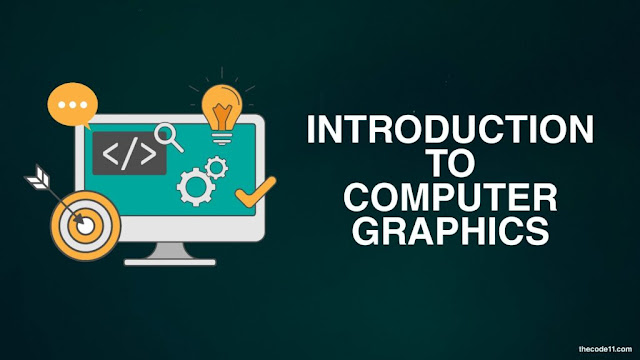In this tutorial, you are going to learn about Introduction to Computer Graphics. Computer graphics is an art of drawing pictures, lines, charts, etc. on computer screen using programming languages. To solve the difficulties of displaying images of any size on the screen Computer Graphics was introduced. Graphics are produced using various algorithms and techniques and it has become a common element in user interfaces, data visualization, motion pictures and many more.
Introduction
Computer Graphics is the process of converting graphics primitive to its geometric description to a set of discrete pixels to be stored in a frame buffer.
Some important terms in Computer Graphics:
- Pixel - It is the picture element and is the smallest unit of a picture. Every pixel has (x,y) coordinate i.e. its position.
- Resolution - The total number of Pixels that lie down on the raster screen at any time.
- Frame Buffer - It is the buffer to store the information of every pixel of a frame. It is generally 60Hz i.e. 60 frames per second.
Types of Computer Graphics
Interactive Computer Graphics: It is also known as active computer graphics. It involves a two way communication between the computer and a User. It is the computer graphics in which image is under the control of user. According to User's wish the image makes the movements on the screen. The computer on receiving signals from the input device can modify the displayed picture appropriately. To the user it appears that the picture is changing instantaneously in response to his command. Basic components of the interactive computer graphics includes I/O, Processing and Display/Output. E.g. Playing game in computer.
Non-Interactive Computer Graphics: It is also known as passive computer graphics. In this type of computer graphics the user does not have any kind of control over the image. The image is totally under the control of program instructions and not under the users. E.g. Screen Saver whose instructions are programmed in such a way that it is constant and fixed and does not change with the request of the user.
Advantages
- Realism: Computer graphics can create highly realistic images, which can be used to simulate real-world environments and situations.
- Flexibility: Computer graphics can be easily manipulated and changed, allowing for quick adjustments to be made to images and designs.
- Efficiency: Computer graphics can automate many tasks that would be tedious or time-consuming to do by hand, increasing productivity.
- Interactivity: Computer graphics can create interactive experiences, allowing users to engage with and manipulate images in real-time.
- Cost-effective: In certain scenarios, computer graphics can be cheaper than traditional methods.
Disadvantages
- Complexity: Creating high-quality computer graphics requires a significant amount of expertise and specialized software, making it a complex and expensive process.
- Quality limitations: Some computer graphics can look artificial, lacking the nuances and details that are present in real-world images.
- Limited by technology: As technology changes, the quality and capabilities of computer graphics will change.
- Dependence on power supply: Computer graphics require a constant power supply and depend on the computer's speed and memory, so an interruption of power or a malfunction can cause the entire process to fail.
- Risk of piracy: Computer graphics, such as video games, are vulnerable to pirating, which can lead to financial losses for the creator.
Computer graphics are a powerful tool that can create highly realistic images and interactive experiences. They are flexible and efficient, but the creation of high-quality graphics requires specialized expertise and software, and they have certain limitations. With constant advancements in technology, we will continue to see advancements in the quality and capabilities of computer graphics.
This article on Introduction to Computer Graphics is contributed by Aditya Raj and edited by Rajnish Kumar. If you like TheCode11, then do follow us on Facebook, Twitter and Instagram.


